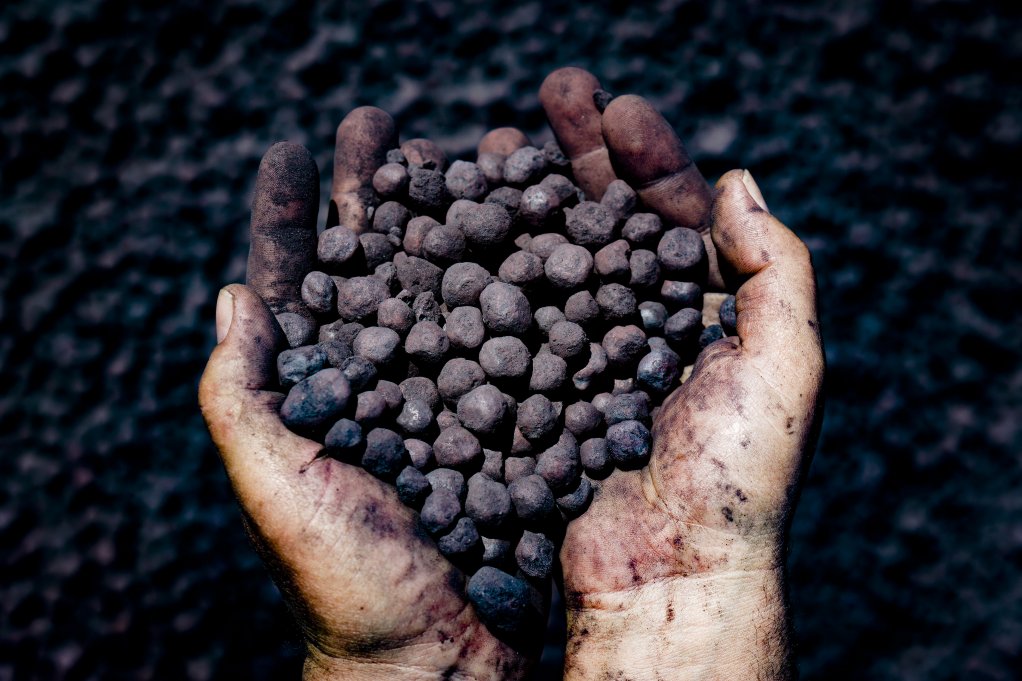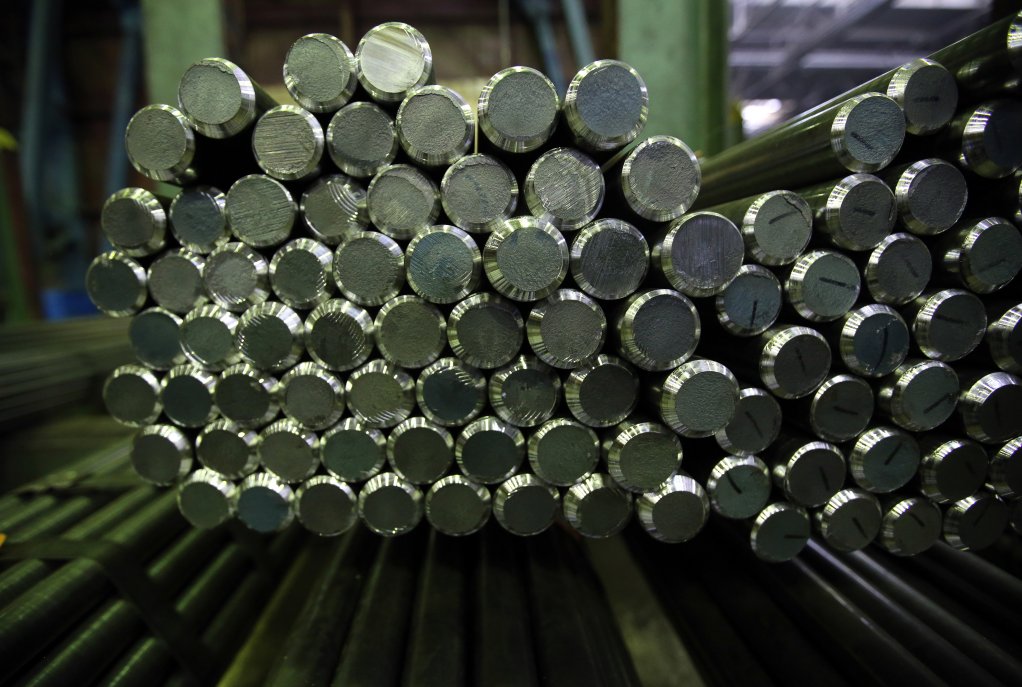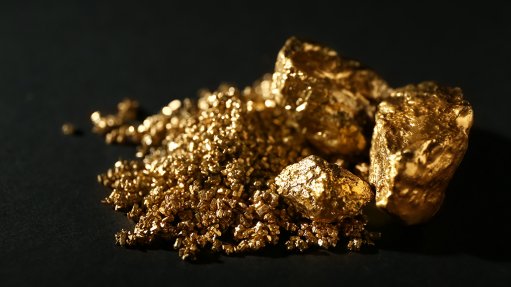Sub-Saharan Africa’s iron-ore sector to benefit from Chinese investment



SUFFERINg SOUTH AFRICA South Africa’s iron-ore production will stagnate at about 58-million tons yearly over 2017 to 2021
Photo by Bloomberg
STRENGTHENING DEMAND BMI’s price forecast for iron-ore indicates that over the coming quarters, iron-ore demand will be supported due to resilient demand from China's construction sector
Photo by Bloomberg
Sub-Saharan African iron-ore production is expected to continue to edge up from 93-million tons in 2017 to 103-million tons in 2021, as continued Chinese investment in the region offsets the effects of lower global prices, says research firm BMI Research, which also, however, warns of the risk the region’s unfavourable regulations pose to this outlook.
“We forecast iron-ore production growth to average 4.7% across iron-ore producing countries in sub-Saharan Africa over 2017 to 2021, outperforming growth of other major producers such as Australia, Russia or China.”
BMI predicts that West-African iron-ore producers Guinea, Liberia and Sierra Leone will be growth outperformers, while traditionally larger markets such as South Africa and Mauritania will struggle.
BMI posits that the iron-ore sector in sub-Saharan Africa will be supported by an increase in Chinese-owned mining projects aimed at tackling the Asian giant’s structural deficit in iron-ore.
A significant proportion of these investments will provide a much-needed boost to smaller markets, which will make up for muted growth in South Africa, as well as lower iron-ore prices globally.
China’s long-term strategic vision for securing a consistent iron-ore supply, has BMI forecasting this growing influx of Asian investment into iron-ore projects in Africa in the coming years. Chinese miners, says BMI, are expected to be particularly spurred by strong government backing, providing them with a higher risk tolerance than Western miners who will continue to struggle with high debt loads and costs. Sierra Leone, Liberia and Guinea are predicted to be the largest benefactors of this capital inflow based on existing or announced Chinese investments. This is despite the negative outlook of iron-ore prices, which BMI forecasts will drop from $65/t in 2017 to $44/t in 2021.
BMI’s price forecast for iron-ore indicates that, over the coming quarters, iron-ore demand will be supported owing to resilient demand from China’s construction sector. This supports the company’s claim that import growth for China will increase in the coming quarters as steel production remains strong as a result of long-term construction and infrastructure projects initiated in 2016.
In Sierra Leone, Chinese steel company Shandong Iron & Steel announced on November 4, 2016, that it would invest up to $700-million in an iron-ore processing plant at its Tonkolili mine, which has the capacity to produce up to 20-million tons of iron-ore a year. While the announced investment will focus on the processing of iron-ore rather than production, it is expected that the Tonkolili mine will eventually increase output to 35-million tons a year, underpinning BMI’s positive outlook for Sierra Leone’s iron-ore sector in the coming years.
Additionally, Liberia’s iron-ore production was revived in 2008 by financial services corporation China-Union’s $2.6-billion investment in the country’s Bong mines, located in central Liberia in Bong County. In 2014, the company made the first shipment of 50 000 t, which it aims to increase in the coming years.
Further, in June, the government of Liberia and equipment manufacturer and contractor TIDFORE of Hong Kong signed an agreement to establish a steel plant, which will help the country begin to beneficiate raw iron-ore. In a similar vein, Guinea’s iron-ore prospects were lifted by State-owned enterprise Aluminium Corporation of China’s (Chinalco’s) October 2016 acquisition of Rio Tinto’s shareholding in the Simandou mine. Chinalco has offered to take over the remaining 7.5% stake owned by the Guinean government. Simandou is estimated to be the world’s largest iron-ore project with over two-billion tons of iron-ore reserves and, if successfully developed, would provide a considerable boost to Guinea’s already solid project pipeline, says BMI.
Regulation Risks
The company notes that a poor regulatory environment in most major iron-ore producing countries in sub-Saharan Africa will be the key downside risk to an otherwise favourable outlook for iron-ore production on the continent. The largest and most important source of uncertainty will be South Africa, with BMI expecting that the passing of the new Mining Charter, gazetted in June, but since suspended, will likely lead to higher compliance costs for miners.
BMI forecasts that South Africa’s iron-ore production will stagnate at about 58- million tons yearly over 2017 to 2021 and the uncertainty leading up to the newly published Mining Charter follows top of mining company Anglo American’s divestment announcement through which it intends to sell its iron-ore operations in the country. Australian mining company Ferrum Crescent has also announced its exit from the Moonlight iron-ore project, in Limpopo.
Further divestments may be on the way following the passing of the new charter, which includes stricter rules over black ownership levels and hiked royalty rates, applying further downside in BMI’s weak iron-ore production forecast in the country. Following the announcement of the new regulations, BMI lowered South Africa’s regulatory score in its Mining Risk Reward Index. The country now scores 36.9 out of 100, below the regional average of 37.7.
Moreover, with South Africa’s Mining Risk Reward downgrade on BMI’s index, four out of the six main iron-ore producing countries in Africa now score below the regional average in terms of mining regulations. As well as South Africa, Guinea, Liberia and Sierra Leone all post lowly scores, owing to endemic corruption, political instability and generally unfavourable business environments. BMI notes a salient example of these regulatory headwinds as the ongoing legal dispute over Chinalco’s Simandou project as a result of the change in government in Guinea in 2015, which saw previous owner BSG Mining Resources stripped of its mining rights to the mine. BSG is engaged in arbitration with the Guinean government over the issue, which may delay Chinalco’s development plans at Simandou, potentially hindering the country’s growth prospects.
Chinese Outlook
BMI’s industry trend analysis for iron-ore indicates that output growth in China will decline on the back of falling ore grades and high costs of production. It notes that miners in China, which operate higher on the cost curve, will be forced to cut output owing to these falling ore grades.
BMI predicts that China’s iron-ore sector will see more mine closures as historically low iron-ore prices will price out high-cost domestic miners.
The company forecasts that Chinese iron-ore production will decline by 5% and 3% in 2017 and 2018 respectively.
BMI says Chinese iron-ore output will average an annual contraction of 1.6% from 2017 to 2021 on the back of historically low iron-ore prices and weak steel consumption growth as fiscal support cools off. In addition, a rising environmental regulatory burden will reduce demand from steel mills for low-grade iron-ore. This will limit domestic output, as Chinese ore grades declined from 66% in 2004 to 17% in 2014.
BMI highlights that, notably, iron-ore inventories in China rose to an all time high of 132.5-million tons in March. China’s property market cooling will outweigh investment in public infrastructure, reducing demand and, thus, prices of iron-ore in the coming quarters.
In-depth analysis and data sets provider Bloomberg Intelligence notes that about 70% of Chinese iron-ore output is uneconomical at prices below $96/t. In particular, miners operating in provinces including Hebei, Fujian, Guang Dong and Xinjiang, will take the strain of lower prices as they sit at the highest-end of the iron-ore cost curve. With the steep fall in prices, many small firms exited the market in 2014, with only 60% of iron-ore firms continuing production. BMI says, with the average price of iron-ore production in China being RMB520/t ($3.6/t), vastly above its forecast for seaborne prices, the firm expects more mine closures in the coming quarters.
Comments
Press Office
Announcements
What's On
Subscribe to improve your user experience...
Option 1 (equivalent of R125 a month):
Receive a weekly copy of Creamer Media's Engineering News & Mining Weekly magazine
(print copy for those in South Africa and e-magazine for those outside of South Africa)
Receive daily email newsletters
Access to full search results
Access archive of magazine back copies
Access to Projects in Progress
Access to ONE Research Report of your choice in PDF format
Option 2 (equivalent of R375 a month):
All benefits from Option 1
PLUS
Access to Creamer Media's Research Channel Africa for ALL Research Reports, in PDF format, on various industrial and mining sectors
including Electricity; Water; Energy Transition; Hydrogen; Roads, Rail and Ports; Coal; Gold; Platinum; Battery Metals; etc.
Already a subscriber?
Forgotten your password?
Receive weekly copy of Creamer Media's Engineering News & Mining Weekly magazine (print copy for those in South Africa and e-magazine for those outside of South Africa)
➕
Recieve daily email newsletters
➕
Access to full search results
➕
Access archive of magazine back copies
➕
Access to Projects in Progress
➕
Access to ONE Research Report of your choice in PDF format
RESEARCH CHANNEL AFRICA
R4500 (equivalent of R375 a month)
SUBSCRIBEAll benefits from Option 1
➕
Access to Creamer Media's Research Channel Africa for ALL Research Reports on various industrial and mining sectors, in PDF format, including on:
Electricity
➕
Water
➕
Energy Transition
➕
Hydrogen
➕
Roads, Rail and Ports
➕
Coal
➕
Gold
➕
Platinum
➕
Battery Metals
➕
etc.
Receive all benefits from Option 1 or Option 2 delivered to numerous people at your company
➕
Multiple User names and Passwords for simultaneous log-ins
➕
Intranet integration access to all in your organisation




















